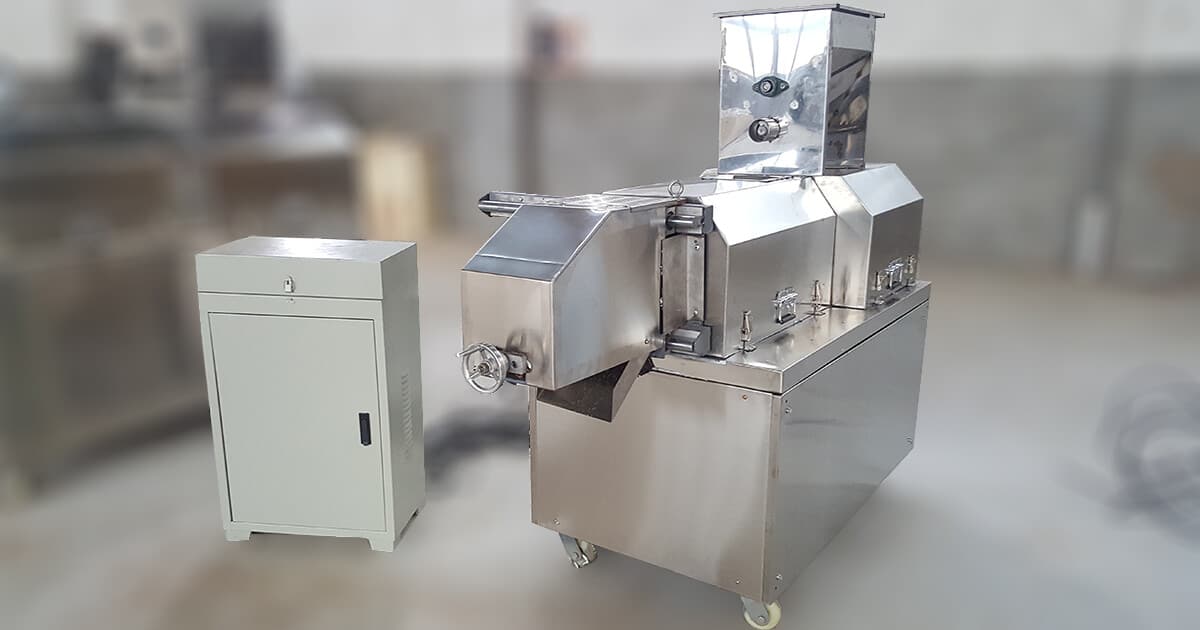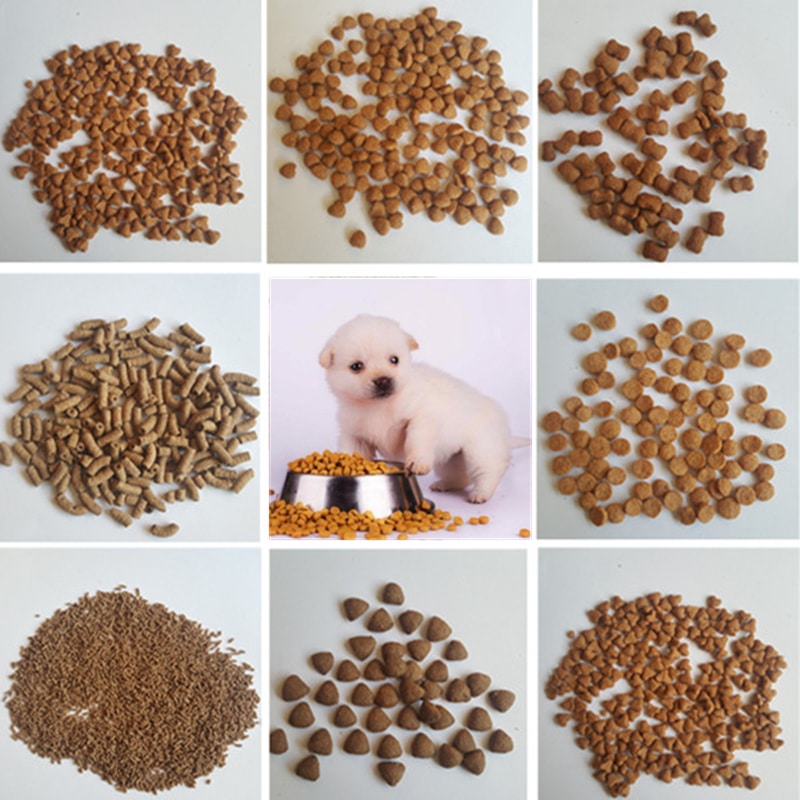Pet Food Extrusion Process
Do you want to know what makes the crunchy kibble that your dog loves so much? It’s not as easy as just pushing things out. Extrusion is a great way to make food for pets. This is the technology that makes pet food safe to eat, easy to digest, and safe to keep.
This guide is for people who want to start a pet food business, own a brand, or just learn more about pet food. The “black box” of making pet food will be opened. What is the difference between good kibble and bad kibble? We will explain it to you in small steps.
What is Pet Food Extrusion?
Think of a pet food extruder as a very powerful, continuous, high-pressure pasta maker that also cooks the dough at the same time. It’s the core technology behind almost all dry pet food on the market today.
Its main job is to heat, sterilize, mix, and shape a feed mixture all in one very effective process. The goal is to make a final product that pets will love, is easy to digest, and will last a long time on the shelf.

What the Extrusion Process Actually Achieves
The pet food extrusion process does several very important jobs at once.
- 1. It Makes the Kibble Digestible (Starch Gelatinization) “The most important job of extrusion is cooking the starches from pet food ingredients like corn, peas, or potatoes. Starch gelatinization is a process that breaks down raw starch at high temperatures. This makes it much easier for cats and dogs to digest the food and get energy from it. If they didn’t do this step, most of the carbohydrates would be hard for them to digest.”
- 2. It Makes the Food Safe (Sterilization) The extruder gets very hot (usually between 120 and 150 degrees Celsius) and puts a lot of pressure on the bacteria, which kills them. This makes the food safe and clean for pets to eat.
- 3. It Creates the Kibble’s Shape and Texture The process gives the kibble its familiar crunchy, porous texture, as well as its uniform shape and size.
- 4. It Allows for High-Fat Formulas The extrusion process makes it possible to add a lot of fats and oils. These are important for a pet’s health and energy.
The Extrusion Process Step-by-Step
Here is a look at what happens inside the pet food processing line.
Step 1: Pre-Conditioning (Getting the Mix Ready)
First, the dry ingredients are mixed together and put into a pre-conditioner. This step adds water and steam. This gives the proteins and carbs more water. It also starts to heat the mixture up to about 110–130°C.
Step 2: The Extruder Barrel (The Cooking Zone)
The extruder barrel then gets the wet, hot mash. The material moves forward because of a big, strong screw. The screw’s strong pressure and friction cook the mash all the way through at very high temperatures.
Step 3: The Die and Knife (Shaping and Cutting)
The dough that has been cooked is pushed through a die at the end of the barrel. The die is a plate with holes in it that shapes the kibble into its final shape, which can be a star, triangle, or circle. A set of knives that turn cuts the kibble to the right size as it comes out.
Step 4: Expansion (The “Puffing” Moment)
This is when the kibble really comes to life. When the dough comes out of the die, it hits the normal air pressure. The water in the dough turns into steam right away when the pressure drops quickly. This makes the kibble puff up and gives it a light, crunchy feel.

Dry Extrusion vs. Wet Extrusion
It is important to understand the two main types of extrusion.
- Dry Extrusion: This simpler process does not use a steam pre-conditioner. All the cooking heat is generated purely from the friction inside the barrel. It’s often used for smaller-scale machines.
- Wet Extrusion: This is the standard for all commercial pet food production. It requires a steam boiler to supply the pre-conditioner. This process offers much better control, higher capacity, and generally produces a higher quality, more consistent kibble.
Controlling the Process: Key Parameters for Quality Kibble
Making good kibble requires precise control over several key factors.
| Parameter | Typical Range | Why It’s Important |
|---|---|---|
| Mash Moisture | 20% – 30% | Affects how well the starch cooks and the final expansion. |
| Extruder Temp. | 120°C – 150°C | Ensures proper cooking and sterilization. |
| Pressure | 30 – 40 bar | Needed for cooking and forcing the dough through the die. |
| Screw Speed (RPM) | 100 – 400 RPM | Controls the amount of shear and the cooking time. |
Common Problems in the Extrusion Process
- Your Grinder is Your Fuel Refinery. “I always tell new plant owners that their extruder is like an engine and their grinder is like a fuel refinery. If you put bad fuel that isn’t ground evenly into a good engine, it won’t work right. That’s all there is to it. A fine, even powder is the first step to good extrusion.”
- The Surging Extruder. “When the flow of kibble speeds up and slows down, it can be very annoying to see an extruder “surging.” Most of the time, this is because the mixer doesn’t feed at a steady rate. The extruder likes a steady stream of material. If you starve it and then flood it, you will only get ugly, uneven kibble.”
- Don’t Forget About ‘Die Swell’. “A lot of people forget “die swell,” which can cost you a lot in packaging. The hole in your die might be 4mm, but the kibble that comes out can easily get bigger than 6mm. The size of the hole you want to make should not be the only thing you think about when choosing the size of your die. We learned the hard way about that on an early production run.”
Conclusion
The best brands of pet food know how to do the extrusion process correctly. It has a little bit of science, technology, and art in it. You can do more than just make kibble now that you know how to control the pressure, heat, and moisture in that machine. You are cooking. And that’s a good thing.


FAQ About Pet Food Extrusion
Q: What is “starch gelatinization” and why is it so important for pet food?
A: The extruder’s high heat and moisture break down the raw, crystalline structure of starch (from corn, peas, etc.) and turn it into a gel that can be digested. This is very important because dogs and cats don’t digest raw starch well.
Q: What is the main difference between a single-screw and a twin-screw extruder?
A: A single-screw extruder is easier to use and is the most common type of extruder for making pet food.
A twin-screw extruder has two screws that fit together. You have a lot more control over how the material is mixed and moved. It costs more, but it’s better for making more complicated formulas, like those with a lot of fresh meat or fat.
Q: Why do they add fats and flavors to the kibble after the extrusion process?
A: The extruder gets really hot, which can ruin the taste and nutrition of delicate fats and flavors. Spraying these on the kibble after it has dried and cooled (a process called “coating”) keeps its quality and makes it taste better for pets.
Q: Can an extruder make different shapes of kibble?
A: Yes. The holes in the die plate at the end of the extruder shape the kibble into its final shape. By changing this plate, a manufacturer can make kibble in many different shapes, such as round, triangle, star, or fish shapes.
Q: Does the extrusion process destroy all the nutrients in the food?
A: No. Some vitamins are very sensitive to heat, so they can be damaged. To make up for this, they are often added back in slightly higher amounts. But the process actually makes it easier for your body to break down the most important nutrients, like proteins and carbohydrates. In general, it makes the food much better for the pet than if it were made from scratch.
